The Cartier Tank isn’t just a watch — it’s a masterful blend of revolution and heritage design wrapped around your wrist, born from a vision, worn by icons, and destined to remain known forever. It was a bold departure from traditional round watches. With its clean lines, Roman numerals, and iconic sapphire cabochon crown, variations of Cartier Tank watches have graced the wrists of style icons and visionaries for over a century.
In this blog, we’ll explore the rich history of the Cartier Tank watches, its evolution through various models, and the key features that make it a coveted collector’s piece. Whether you’re a seasoned watch enthusiast or simply appreciate classic design, this deep dive into the world of the Cartier Tank history, inspirations, and we will uncover why it remains an enduring masterpiece.
A Brief History of the Tank Cartier: Through the Ages
In 1917, Louis Cartier, the grandson of company founder Louis-François Cartier, designed the Tank watch. The Cartier Tank history begins around the First World War, inspired by the distinctive rectangular shape of military tanks, particularly the French Renault FT-17 tank. When the Cartier Tank debuted in the early 20th century, wristwatches gradually replaced pocket watches—a shift accelerated by the war.

The first Cartier Tank model was the Cartier Tank Normale watch. While the watch was rectangular, its dial was square, framed by case sides known as ‘brancards’, which also functioned as the bezel. These early models featured flat-topped brancards and straight, slab-like sides, reinforcing the Renault tank-inspired aesthetic. Though later Tank variations and other shapes of Cartier Tank watches have gained greater recognition, the Normale was the groundbreaking design that set the stage for Cartier’s future creativity. Notably, its design remains the most faithful to the Renault FT-17, whereas subsequent Cartier Tank watches appear to have drawn more influence from the Normale itself rather than the original tank inspiration.
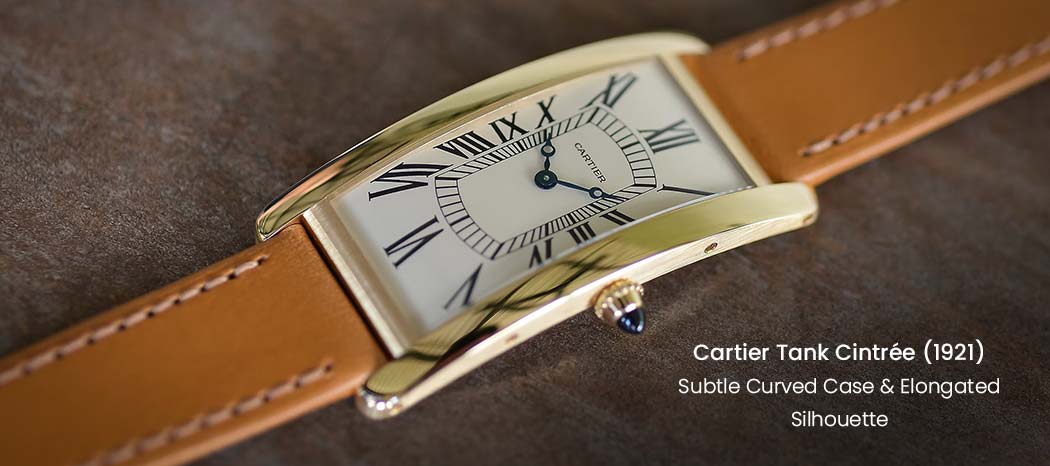
By 1921, Cartier pushed further into uncharted territory. In just a few years, they had defied industry conventions, proving that a rectangular, masculine timepiece could not only succeed but also redefine the dress watch category and spark a new fashion trend. While the original Tank had a shorter case, the Cartier Tank Cintrée watch introduced a longer, more rectangular design with a subtle curve. Launched during the height of the Art Deco era, its elongated silhouette was perfectly in sync with the period’s aesthetic. This new model featured a curved profile, extended case, and refined numerals, with its rectangular form further emphasized by a slimmer width and increased length.
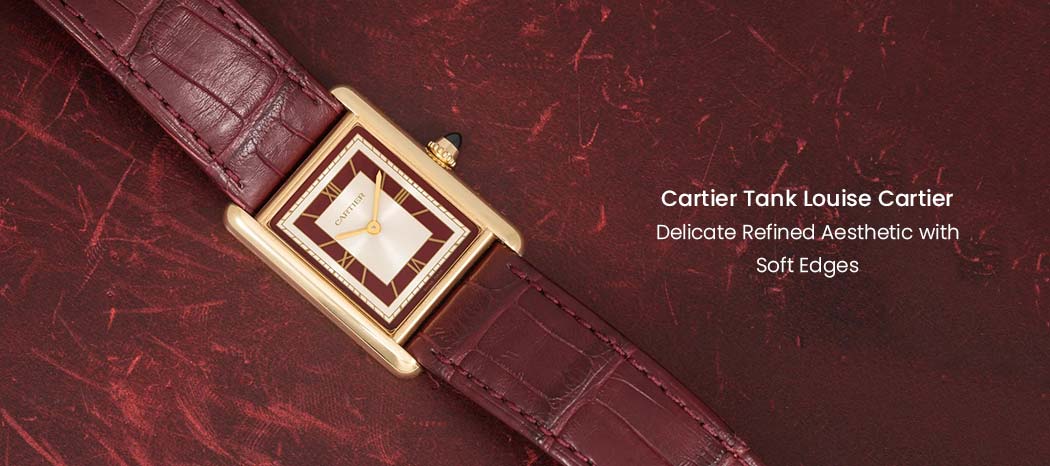
Building on the success of the Tank Normale and Tank Cintrée, Cartier expanded the collection throughout the Roaring Twenties with several new models. One of the most iconic among them is the Cartier Tank Louis Cartier watch, also known as the Tank LC or Tank JC (after Jean-Jacques Cartier). Considered the quintessential Tank, it remains one of the most celebrated variations among Cartier Tank watches. Introduced in the early 1920s, the Tank Louis Cartier was essentially an evolution of the Normale, preserving its signature aesthetic while introducing key refinements. Instead of the Normale’s squared brancards with flat tops and sharp edges, this version featured rounded outer edges, enhanced scalloping, and a more delicate, elegant presence.
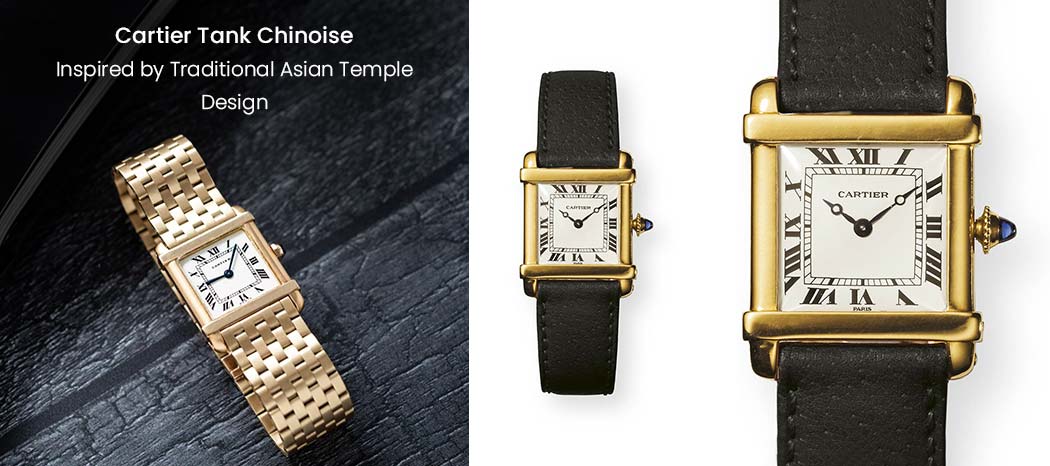
In 1922, Cartier introduced a new variation of the Tank—the Tank Chinoise—reflecting the rising influence of East Asian aesthetics in Europe. The Cartier Tank history reveals its design evolution, drawing inspiration from different periods. After World War I and the rise of the Chinese Nationalist Republic, Asian influences became more prevalent in both architecture and fashion. This cultural shift played a role in shaping the Cartier Tank Chinoise watch, which maintained the signature brancards extending into the lugs while incorporating two additional horizontal bars that framed the top and bottom of the case. This structural detail was reminiscent of the ornate entry gates in traditional Asian architecture. “Chinoise” comes from Chinoiserie, a broader term for Western artistic styles that incorporate Chinese design elements.
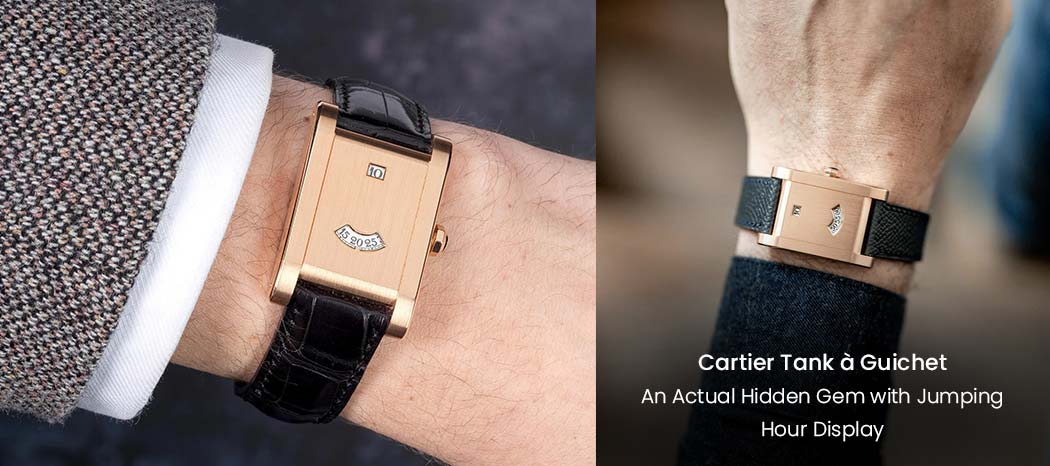
Unlike most variations in the Cartier Tank history, which were widely available to Cartier customers, the Cartier Tank à Guichet watch, introduced in 1928, was an exclusive timepiece reserved for a select group of VIP clients. What sets this model apart is its unconventional approach to time display. Instead of a traditional dial, it features a jumping hour mechanism, where the hours are shown through a small aperture—giving it a “digital” effect unique within the Tank collection. The rest of the watch face is left uncovered, seamlessly blending with the metal case, reinforcing its resemblance to an armored tank.
At the time of its release, the jumping hour display was a rare and innovative feature, marking a bold departure from the classic use of hands to indicate time.
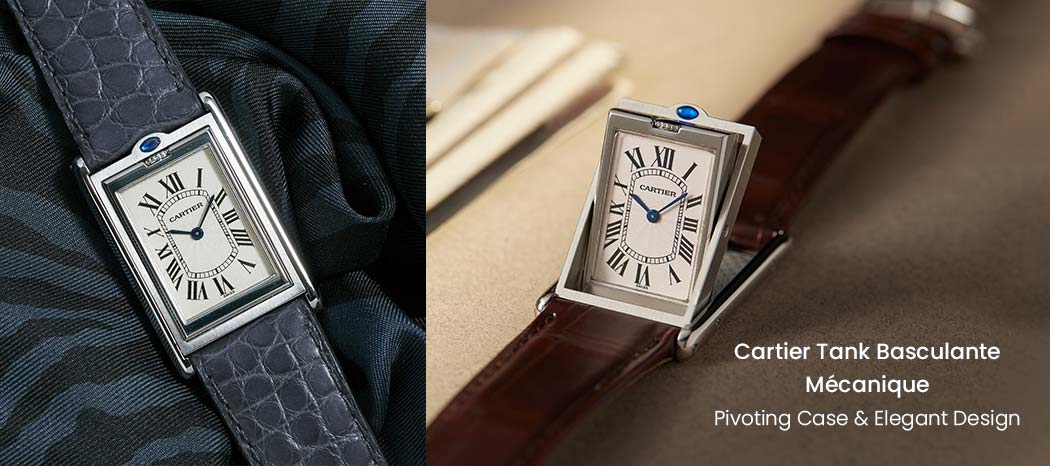
In 1931, Jaeger-LeCoultre introduced the Reverso, a watch featuring a unique flipping case mechanism designed to shield the crystal during sports activities. Just a year later, Cartier unveiled its take on the concept with the Basculante. While both watches achieved the same protective function, the Cartier Tank Basculante Mécanique watch used a different approach—allowing the dial and caseback to pivot top-over-bottom within a supporting frame.
Notably slimmer than the Reverso, the Basculante also had a distinctive feature: in its mid-flip position, it could function as a small desk clock.
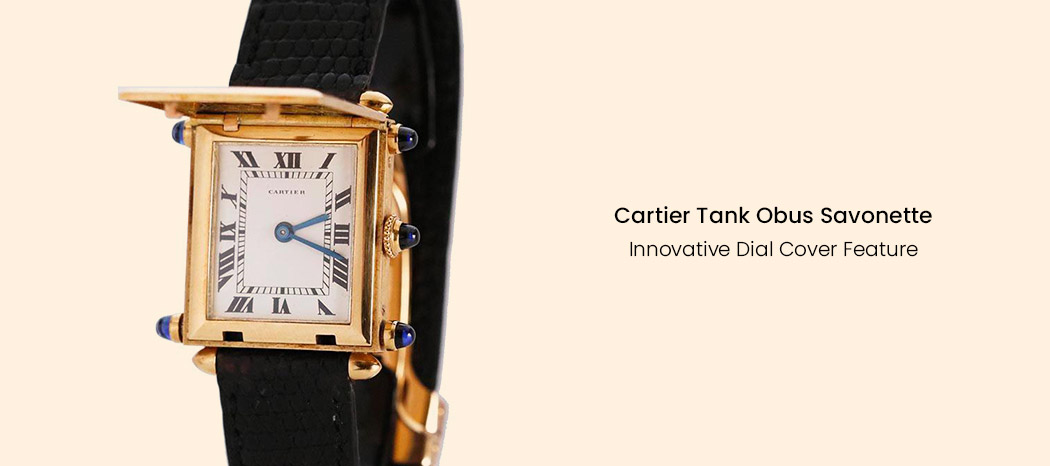
As early as 1926, the brand introduced the Cartier Tank Obus Savonette watch, a model featuring a hinged cover that protected the dial. This concept demonstrated Cartier’s early experimentation with safeguarding watch crystals—years before the Reverso and Basculante were introduced. However, the design never gained widespread popularity and was eventually overshadowed by the Tank Basculante.
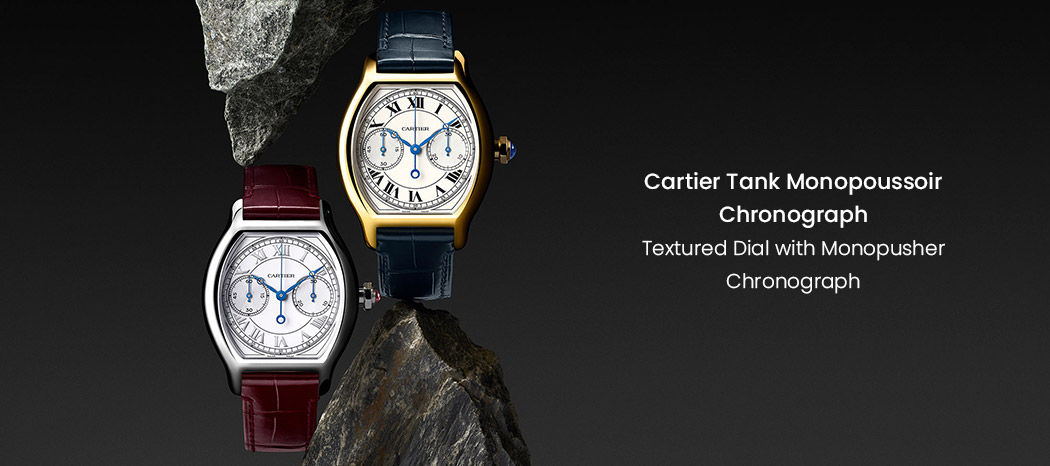
The Cartier Tank Monopoussoir Chronograph watch, introduced in 1935, stands out as the first complicated timepiece in the Tank collection, proving that Cartier excels not only in design but also in intricate watchmaking. A monopusher chronograph is particularly challenging to engineer, as a single pusher—integrated into the crown in this case—controls all three functions: start, stop, and reset. Maintaining the signature Tank aesthetic, this model typically features a guilloché dial, with the only major deviation being the addition of dual chronograph registers.
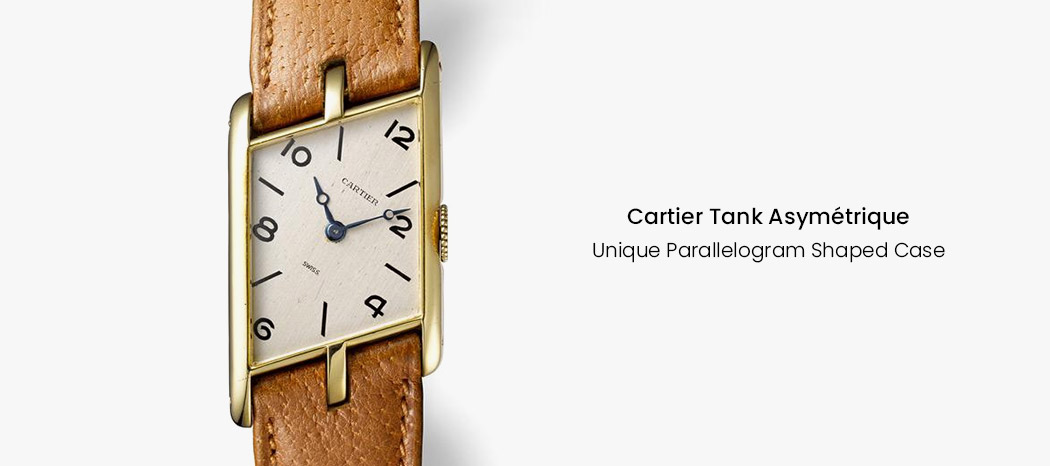
When Cartier introduced the Cartier Tank Asymétrique watch in 1936—the final Tank design released during Louis Cartier’s lifetime—it was never meant to be part of the Tank collection. It was a deviation from the shapes of Cartier Tank watches, and was originally a standalone piece called the Parallelogram. In 1999, Cartier revisited the design, producing limited editions of 99 pieces each for both left- and right-handed wearers, since the 30-degree offset dial primarily benefits right-handed drivers.
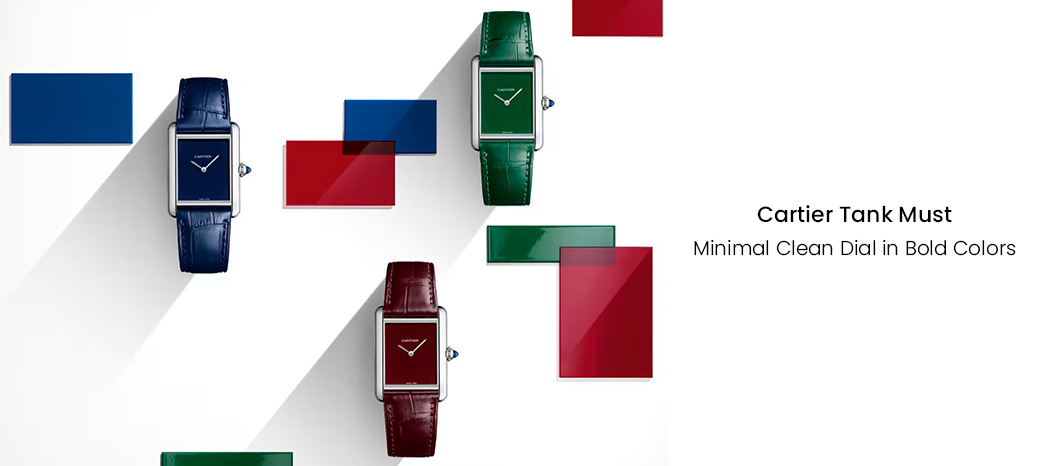
Jumping ahead to 1977, the watch industry had undergone significant changes. By this time, the Tank had been an established icon for over five decades. Meanwhile, Seiko’s introduction of the quartz movement had disrupted the market, posing a challenge for luxury brands struggling to compete with the affordability of battery-powered watches. Cartier’s answer was the 1977 Cartier Tank Must watch collection, a line that continues today. While the Must may not be traditionally beautiful, it commands attention. Unlike Cartier’s other Tank models, which showcase intricate detailing, the Must stands out for its simplicity. The dials feature bold, power-suit hues popular in the late 1970s and early ‘80s—deep burgundy, navy, and emerald—paired with matching dyed leather straps.
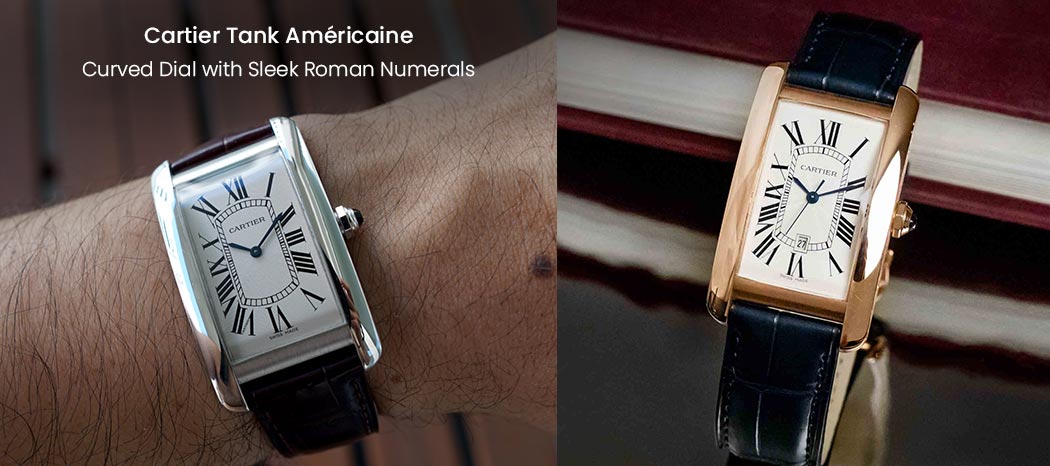
Another standout in the Tank lineup is the Cartier Tank Américaine watch, launched in 1989 as a contemporary reinterpretation of the Cintrée. While its design is somewhat less dramatic than the Cintrée, it retains the signature curved case shapes of Cartier Tank watches that define the original. But unlike the Cintrée, which featured a curvature on both the front and back, the Américaine models had a curved dial side while maintaining an almost flat caseback.
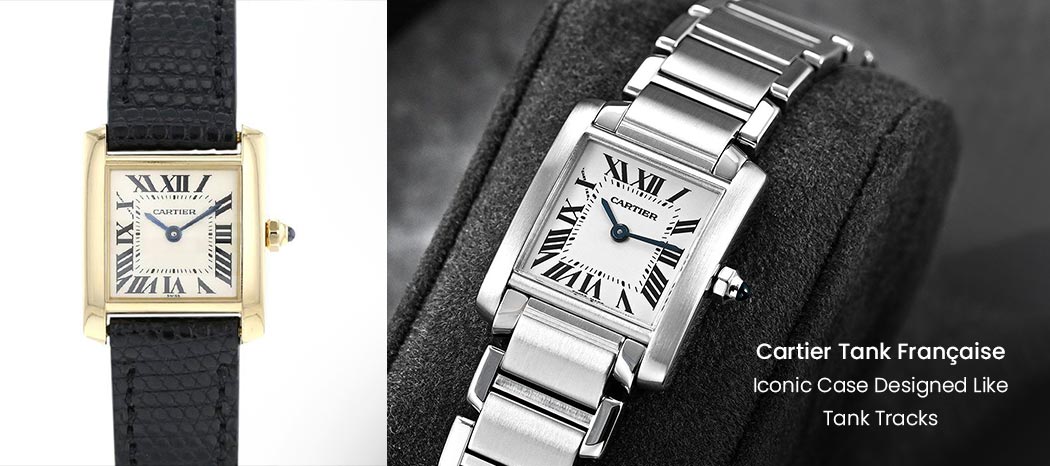
Drawing inspiration from the Tank Normale again, the 1996 Cartier Tank Française watch brought back a squarer case while introducing a modern touch with its link bracelet. Its sportier aesthetic makes it versatile enough for both casual and formal settings. Designed to resemble tank tracks, the bracelet pays homage to the collection’s heritage. As one of the most recognizable Tank sub-models, the Française has graced the wrists of celebrities, world leaders, and public figures alike, embodying the essence of the classic Tank. Signature features include sword-shaped hands, Roman numeral hour markers, a geometric case—often more square than rectangle—and a distinctive metal bracelet.
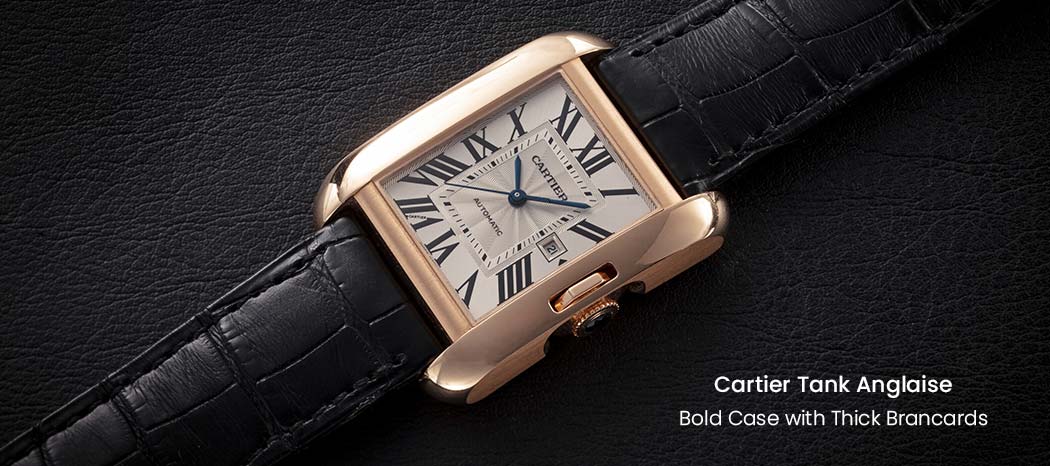
Introduced in 2012, the Cartier Tank Anglaise watch stands out as the most contemporary interpretation of the Tank. It sets itself apart from other Tank models, featuring a bolder case with thicker brancards, a more substantial wrist presence, and a subtle curve. While its case embraces a modern aesthetic, the dial—adorned with a guilloché background, Roman numeral indices, and a date display at 3 o’clock—remains true to Cartier’s classic design language. This fusion of traditional and modern elements makes the Anglaise particularly distinctive. It is also one of three models honoring Cartier’s original locations, with the Anglaise symbolizing the London branch.

If you’re looking for a unique spin on a Tank chronograph, the 2013 Cartier Tank MC Chronograph watch is worth considering. This model debuted with Cartier’s first in-house automatic movement, the Calibre 1904 MC, opting for a classic dual-pusher design instead of a monopusher. While the Tank Monopoussoir Chronograph leans towards a more formal aesthetic, the Tank MC, despite its precious-metal case, carries a distinctly sporty appeal.
The Cartier Tank remains a timeless symbol of elegance, innovation, and craftsmanship. With its rich history and evolving designs, it continues to captivate watch enthusiasts and collectors alike. From classic models to modern reinterpretations, the shapes of Cartier Tank watches showcase the brand’s ability to blend tradition with contemporary style.
Cartier Tank Collection: The New Generation
The Cartier Tank collection, today, stands the test of time, living the legacy that started in 1917. The maison currently showcases 7 variants from the legendary collection; Tank Must, Tank Louis Cartier, Tank Française, Tank Américaine, Tank Cintrée, Tank MC, and Tank Asymétrique. The current Tank lineup has evolved while preserving its original inspiration, blending heritage with modern craftsmanship. The collection features a diverse range of materials, including steel, various golds, platinum, and diamonds, offering both understated elegance and luxury. It incorporates both mechanical and quartz movements, ensuring precision and versatility. Each model reflects a harmonious fusion of artistry and innovation, staying true to Cartier’s timeless design philosophy while embracing contemporary advancements.
KAPOOR WATCH COMPANY:
Kapoor Watch Company is a premier Indian luxury retailer, offering an extensive selection of luxury watches from Cartier’s latest Tank collection to the latest from the brands like Bulgari, and Chopard. With a diverse catalogue that includes luxury timepieces, fine jewelry, and high-end accessories, we cater to connoisseurs of elegance and craftsmanship. Kapoor Watch Company continues to be a trusted destination for those seeking timeless sophistication and exclusivity in luxury horology. Visit Kapoor Watch Co. website OR Visit Kapoor Watch Co. Stores to check out their collection.


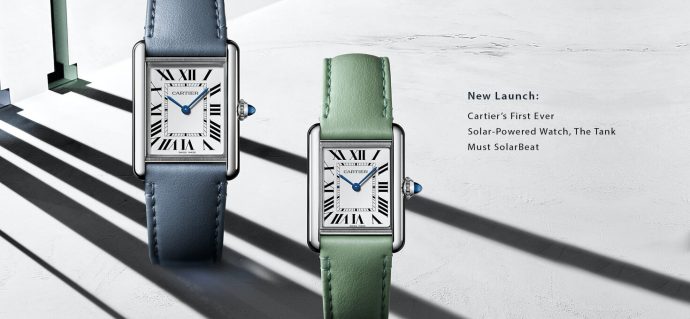
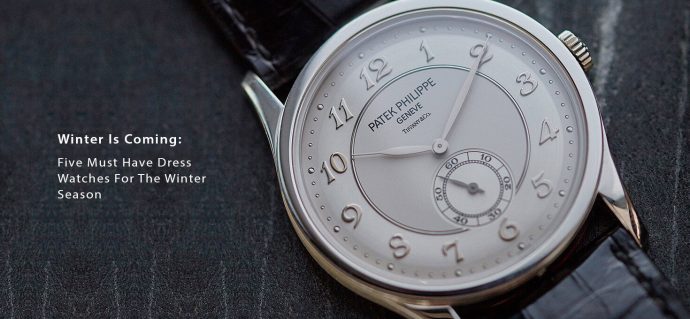

Recent Posts
Recent Comments
Archives